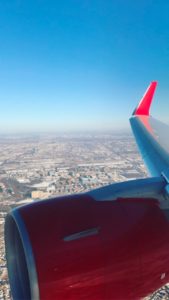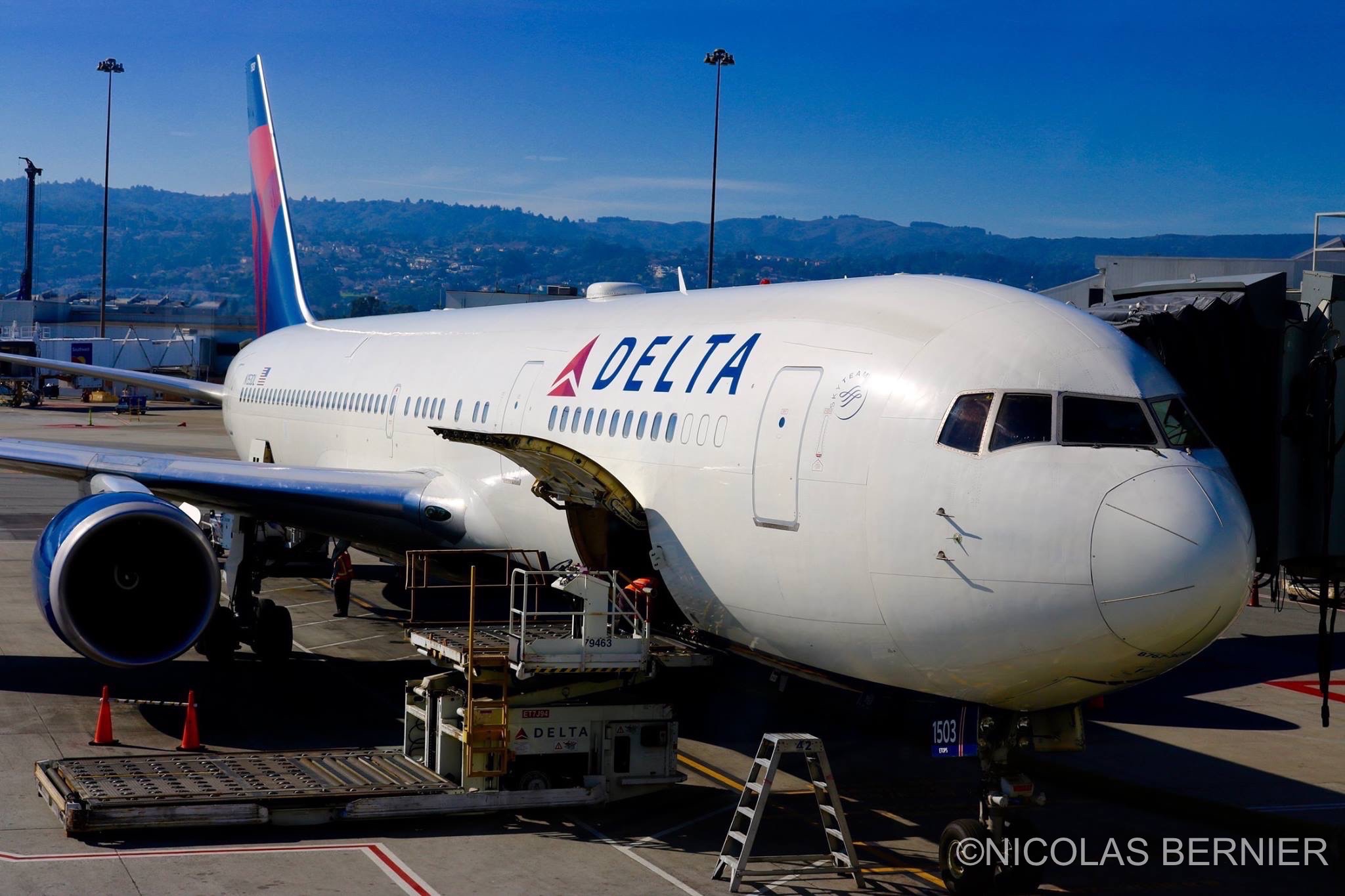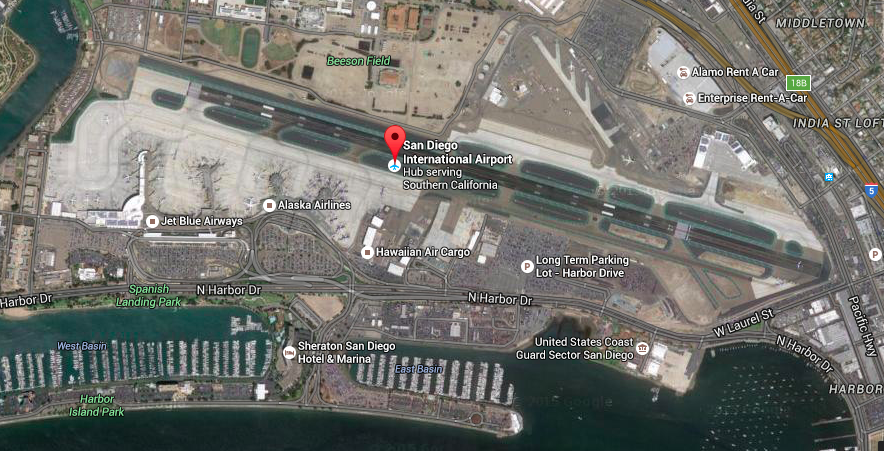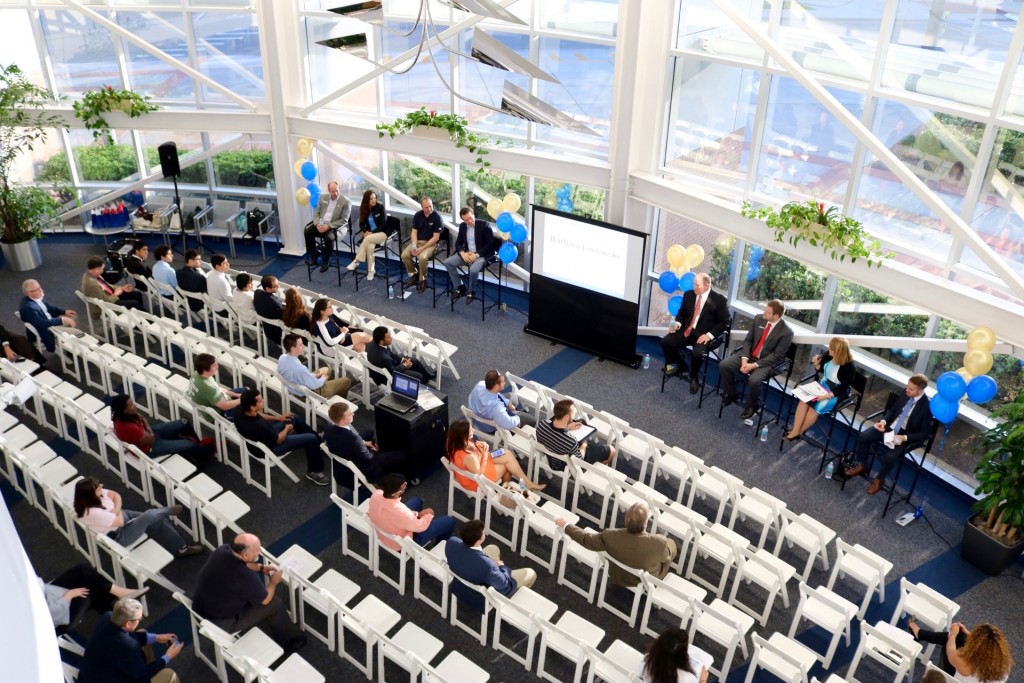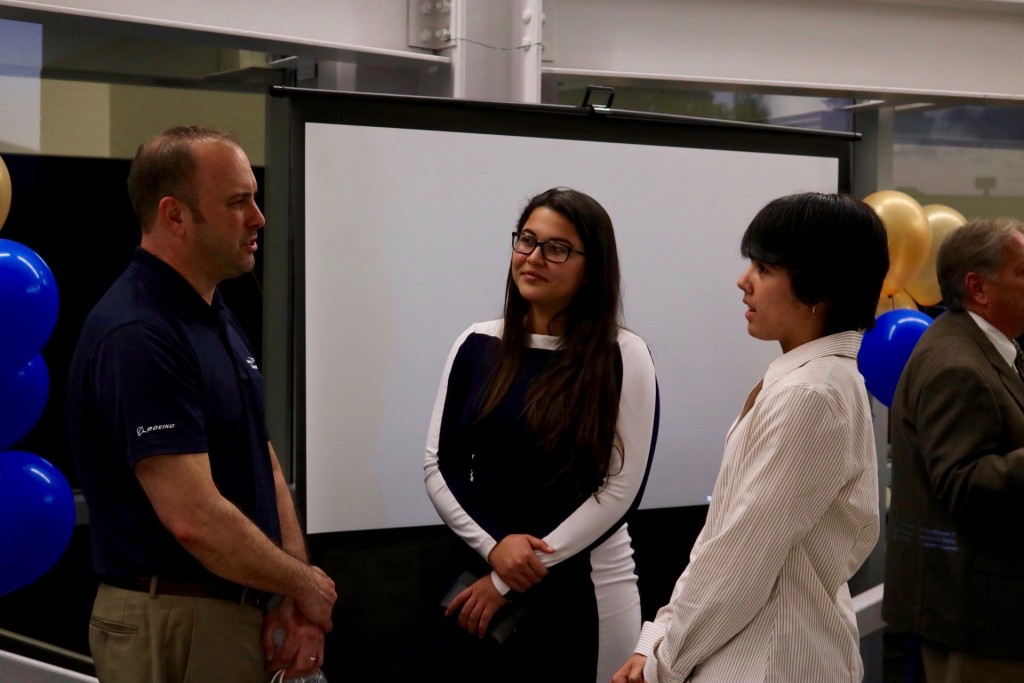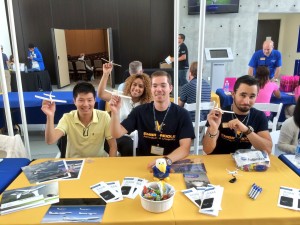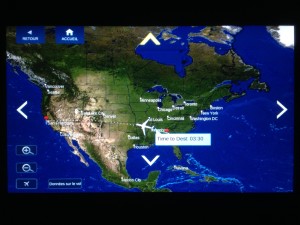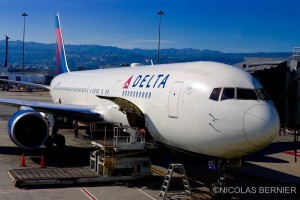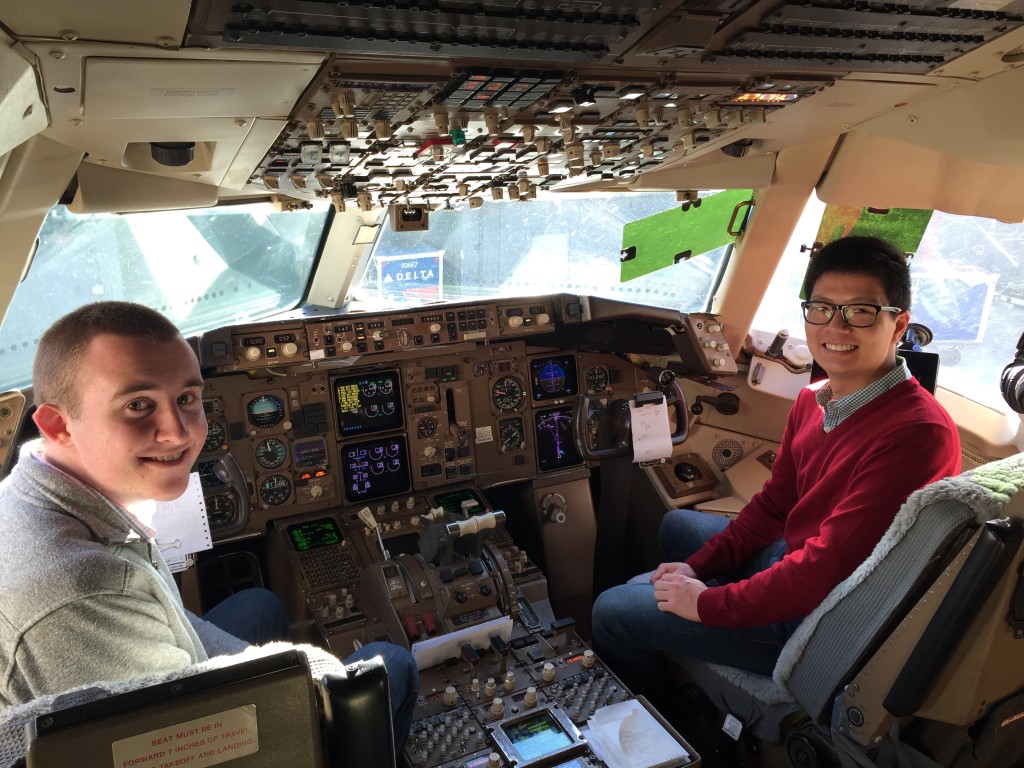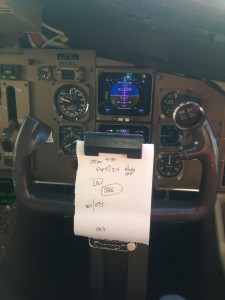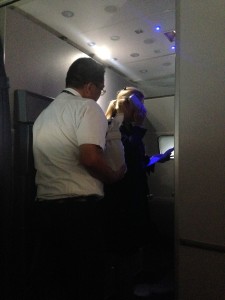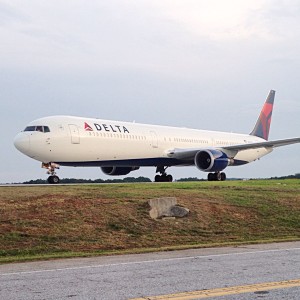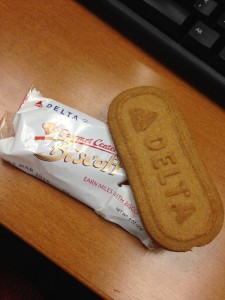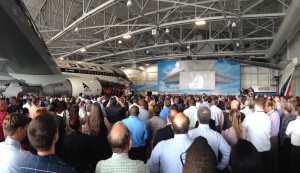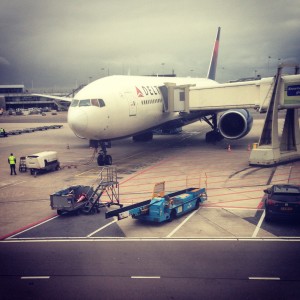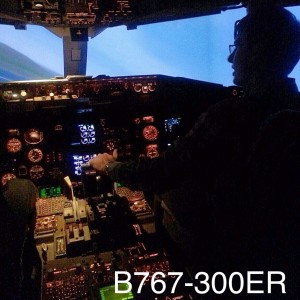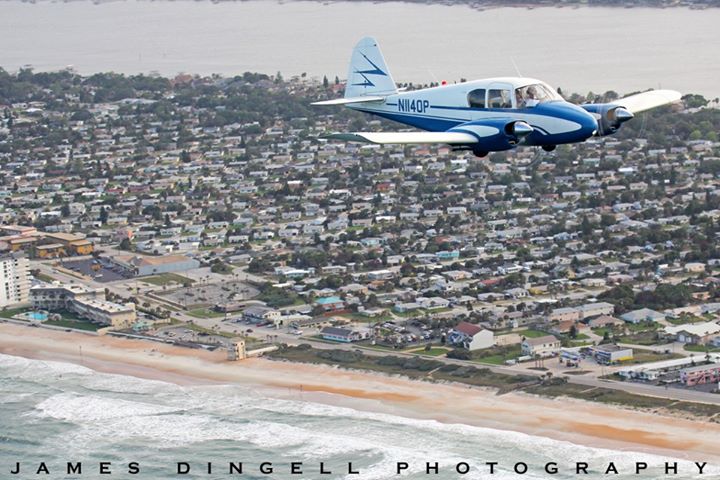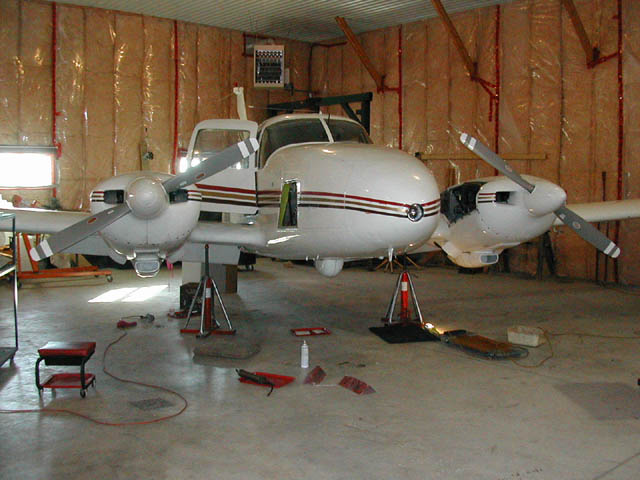LAS VEGAS, NV – Last week, a group composed of about 50 Embry-Riddle students and faculty from the Daytona Beach campus attended the 2015 NBAA Business Aviation Convention and Exhibition in Las Vegas. This three-day event brought together 26,000 key aviation contacts from all around the globe, including current and prospective business aircraft owners, manufacturers, and customers. This year, the convention welcomed 1,000 exhibitors and more than 100 aircraft on the static display.
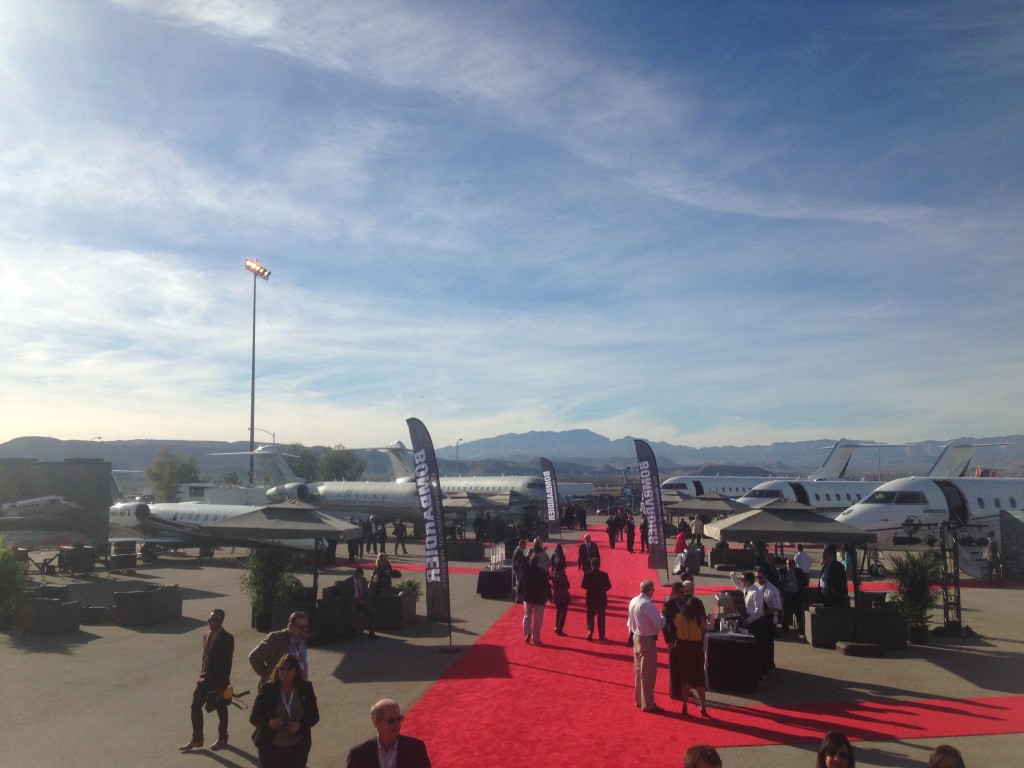
View of the many Bombardier Business Aircraft on the static display at Henderson Executive Airport.
Most of our group traveled from Florida to Nevada on Monday, the day before the convention. Since NBAA 2015 is a large event with much to cover, each student made their own schedule. The exhibitors were divided in two concourses at the Las Vegas Convention Center. The static display of aircraft was located at the Henderson Executive Airport which was a 30 minute bus drive from the convention. NBAA also offers many general information sessions, educational sessions for students, and social events.
I did not attend many of the information sessions I planned to go to because I did not have time. I wish I could have attended “Engaging Airport Management on Key Issues” and “The Future of Planes and Flying.” I was an intern at the Montreal Airport last summer so I thought the session would be interesting. Knowing what aviation will look liken the future is intriguing.
I spent most of the time walking between the many exhibitors present. This convention was a great opportunity for students to connect with people of the industry and exchange business cards. My friend and I had the chance to talk with the Manager of Customer Service Communications at Dassault Falcon. We discussed the new Falcon 8X product which is currently in development. We also went over the FalconResponse program, which was launched in May 2015. It is designed to support the AOG (Aircraft on Ground) more rapidly. The manufacturer has 2 Falcon 900 available 24/7 to carry technicians, parts, and tools needed to return an aircraft back in the air.
The province of Quebec (the province where I come from) had a booth which reunited many aerospace companies based in Montreal. I was surprised to learn that that the Government of Quebec had an office in Atlanta, GA.
My favorite general session was during the second day of NBAA. Captain Chesley “Sully” Sullenberger, known as the hero of the “Miracle on the Hudson,” spoke to the audience about his experience on US Airways flight 1549. It was very interesting to know about how he felt during the eventful flight. Even though the crew was stressed and obviously not calm, he told us that discipline helped him get through the flight. He knew he did not have time to do all the checklists, but he decided to perform very well the items with the highest priorities. At the end of his speech he said that it is important to be professional: “remember why we are doing this: because our passengers deserve it, our colleagues expect it, and our profession demands it.”
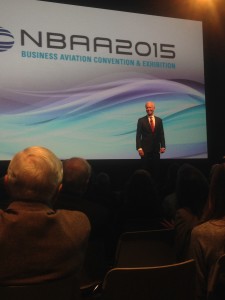
Captain Chesley “Sully” Sullenberger, hero of the “Miracle on the Hudson” shared his experience with the audience on the Second Day General Session of NBAA.
It was my second time in Las Vegas, but the last time I visited was ten years ago so it has been a long time. The first thing I felt as I exited the aircraft after landing was the cold temperature of the desert. When I made my way to the terminal and to the baggage claim carrousel I noticed that there were slot machines at the boarding area and at the arrivals level. There are casinos almost everywhere you are at the airport!
We stayed at the Hard Rock Hotel and Casino for the week. We did not really have much time to visit because the convention ended late on some days and we were really tired. At around 3:00pm I was already exhausted and wanted to go to bed! During my last night in the Sin City, I went out with some friends to explore the city. We went to the famous Las Vegas Strip where all the action happens. For me, it felt like Times Square on a smaller scale. There were many outdoors screens and lights everywhere. We visited the Paris Las Vegas hotel and it was actually fascinating. Inside, it is like an indoor city with numerous restaurants and boutiques. We ate dinner at BurGR, a restaurant for burger lovers that I recommend you stop by if you plan to visit Las Vegas.

View of the “Las Vegas Strip” from our hotel.

The Bellagio Hotel and Casino and its exceptional front water fountains.
NBAA 2015 was a great experience and I already look forward to NBAA 2016 in Orlando! For now, I need to get back to work since I missed an entire week of school. I have many projects and presentations that are due before and after Thanksgiving break.
Until next time!
Nicolas


